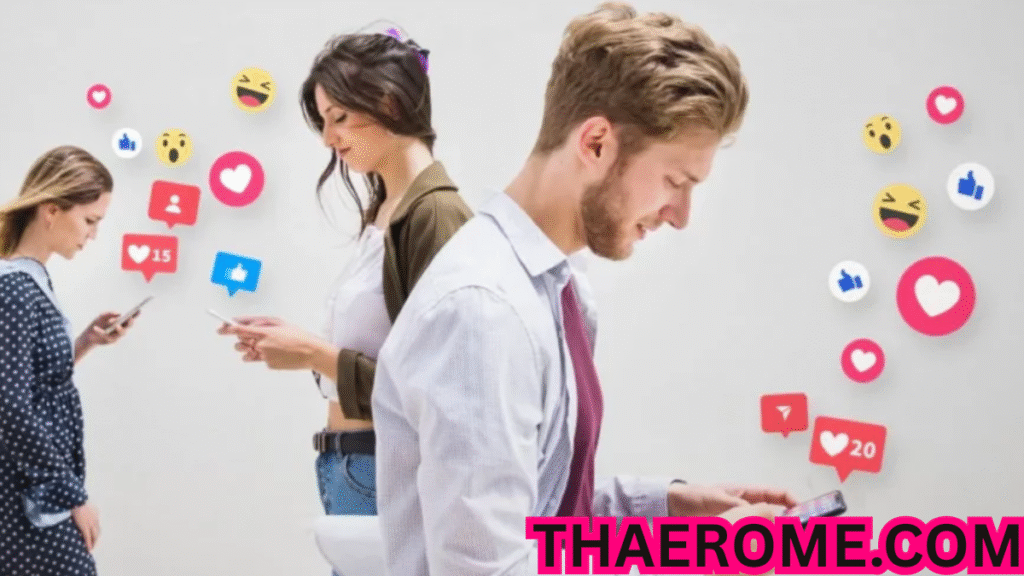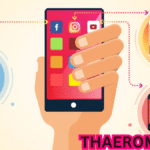The Age of Influencer Culture
Influencers Gone Wild The advent of social media platforms has redefined fame, creating a new generation of celebrities known as influencers. These individuals gain popularity and power not through traditional means like film or television but via platforms such as Instagram, TikTok, YouTube, and Twitter. With millions of followers at their fingertips, influencers often wield more power than traditional celebrities. However, this immense reach comes with a heightened level of scrutiny. The phrase “Influencers Gone Wild” encapsulates this phenomenon — a cultural moment where influencers, due to fame, wealth, or recklessness, overstep boundaries and suffer public backlash.
The term suggests more than just erratic behavior. It represents a shift in how the public perceives influencer accountability. In an age where anyone can broadcast their life 24/7, the margin for error is razor-thin. Influencers who once carefully curated images of perfection now find themselves at the center of controversy, often due to impulsive actions or misjudged content.
Viral Fame and the Double-Edged Sword
Social media stardom is a double-edged sword. On one side, it offers limitless opportunities for wealth, brand partnerships, and celebrity status. On the other, it creates a pressure-cooker environment where the line between personal expression and public expectation is easily blurred. Many influencers, in their quest for relevance, push the boundaries of social norms, ethics, or legality, sometimes resulting in viral moments that backfire spectacularly.
“Going wild” can include inappropriate pranks, racially insensitive remarks, outlandish spending sprees, or blatant misinformation. The very platforms that Influencers Gone Wild elevate these individuals also become the battlegrounds where their actions are dissected, criticized, and often punished. What might begin as a poorly thought-out joke can spiral into a career-ending scandal.
Cancel Culture and Its Impact
The phrase “Influencers Gone Wild” is often intertwined with cancel culture, a societal response wherein public figures are called out and ostracized for their misdeeds. While some view this as a necessary form of accountability, others argue that it promotes mob mentality and leaves no room for growth or redemption. For influencers, being “canceled” doesn’t just mean losing followers — it can lead to the loss of sponsorships, mental health struggles, and in extreme cases, legal repercussions.
Social media thrives on virality, and influencers going rogue are irresistible content for both mainstream media and online gossip forums. The swiftness with which the internet judges can be brutal. Yet, many influencers attempt comebacks, relying on public apologies, PR strategies, and the short memory of the online crowd. Some successfully return to the spotlight, while others fade into obscurity.
The Psychology Behind Influencer Behavior
The behaviors that lead to an influencer going “wild” are often rooted in the psychology of fame. Sudden success and online validation can significantly impact a person’s self-perception. The dopamine rush from likes and shares can create a cycle of dependency on public approval. This pressure to constantly perform or shock audiences to stay relevant often leads influencers to take increasingly controversial steps.
In some cases, influencers may lose touch with reality, believing they are untouchable due to their online influence. This phenomenon, often referred to as “influencer entitlement,” explains why some stars behave recklessly or dismiss the consequences of their actions. The absence of real-world checks and balances, combined with a digital echo chamber of praise, can make it hard for influencers to distinguish between online personas and their real selves.
Scandals and Spectacles: When the Curtain Falls
Over the past few years, several high-profile influencers have been caught in scandals that captivated global audiences. These incidents often involve a mix of personal irresponsibility, unethical behavior, and public backlash. The media coverage that follows can be relentless, turning influencers into cautionary tales overnight.
From inappropriate comments to attending large parties during pandemics, the scope of “influencers gone wild” varies. Some have been accused of cultural appropriation, financial scams, or promoting harmful beauty standards. Others have misused charity donations, staged fake relationships, or engaged in unethical business practices. In each case, the influencer’s credibility takes a hit, and their brand often suffers irreparable damage.
The Role of the Audience
While influencers bear responsibility for their actions, the audience plays a crucial role in enabling and magnifying their behavior. Followers, fans, and critics create a feedback loop where every action is rewarded or punished through engagement. Likes, shares, comments, and reposts amplify the visibility of both positive and negative content.
Audience fascination with drama and scandal often fuels the rise of influencers who thrive on controversy. The more extreme the behavior, the more likely it is to go viral. This creates a paradox where being “canceled” can sometimes boost an influencer’s fame rather than diminish it. Some influencers have even adopted a persona of being unapologetic, embracing their notoriety to sustain their relevance.
Platform Responsibility and Regulation
Social media platforms also share responsibility in moderating influencer behavior. With millions of content creators generating endless streams of information, platforms must enforce community guidelines and ethical standards. However, these platforms often face criticism for being inconsistent in their moderation efforts.
Algorithms that prioritize engagement can unintentionally promote shocking or harmful content. When influencers go wild, platforms are often slow to react, fearing backlash from large fan bases or the potential loss of revenue. This hands-off approach can exacerbate issues, allowing harmful trends to proliferate unchecked.
Redemption and Reinvention
Interestingly, not all influencers who go off the rails are doomed. Some manage to stage successful comebacks by acknowledging their faults, taking time off social media, or reinventing their public image. A heartfelt apology, combined with genuine actions toward change, can win back followers and brand deals.
The public’s capacity for forgiveness varies, but in many cases, people appreciate vulnerability and growth. Influencers who are transparent about their struggles and show consistent behavior improvements often regain respect. However, the path to redemption requires time, humility, and a willingness to learn from past mistakes.
Lessons from the Chaos
The saga of “influencers gone wild” teaches valuable lessons about the nature of modern celebrity and the volatility of internet fame. Authenticity, accountability, and emotional intelligence are more important than ever for those in the public eye. It also highlights the dangers of building an identity solely around social media validation.
For aspiring influencers, the message is clear: fame without responsibility is a recipe for disaster. The digital world offers immense power, but with that power comes an equally significant responsibility to uphold values and consider the broader impact of one’s actions.
For audiences, the lesson lies in being discerning consumers of content. Rather than idolizing influencers without question, viewers should be critical and aware of the potential manipulations and fabrications behind the curated images they see.
The Future of Influencer Culture
Looking ahead, the influencer industry will likely undergo further evolution. Regulatory bodies, advertisers, and platforms may implement stricter guidelines to ensure ethical behavior. Influencers will be expected to maintain transparency, disclose sponsorships, and behave in a socially responsible manner.
Moreover, audiences are becoming increasingly aware of performative activism and insincere behavior. As a result, authenticity is gaining value over spectacle. Influencers who build their platforms on integrity, creativity, and empathy may outlast those who rely on controversy and shock value.
The phrase “Influencers Gone Wild” may eventually fade, but its legacy will serve as a powerful reminder of how quickly the tide can turn in the court of public opinion. In a world where every action is documented and scrutinized, the ability to navigate fame with grace and maturity is not just admirable — it’s essential.
Frequently Asked Questions (FAQs)
What does “Influencers Gone Wild” mean?
“Influencers Gone Wild” refers to situations where social media influencers engage in inappropriate, controversial, or reckless behavior, often leading to public backlash and media attention. It can involve anything from offensive comments to illegal activities.
Why do influencers behave in controversial ways?
Influencers may act controversially to gain attention, stay relevant, or due to the psychological effects of fame and constant online validation. The pressure to stand out in a crowded digital space can push some to cross ethical boundaries.
Can influencers recover from a scandal?
Yes, many influencers have managed to recover by issuing sincere apologies, taking responsibility, and showing consistent improvement in their behavior. However, some scandals are too severe, and recovery becomes difficult or impossible.
How does the public influence an influencer’s behavior?
The public plays a significant role by either supporting or condemning influencers’ actions. Followers can elevate or cancel influencers depending on how they react to their content. Public feedback, both positive and negative, shapes influencer behavior.
Are social media platforms doing enough to regulate influencer conduct?
Many argue that platforms are not doing enough. While most have guidelines, enforcement is often inconsistent. More robust moderation and accountability systems are needed to prevent harmful behavior and ensure safe content consumption.
What impact does going “wild” have on an influencer’s career?
The impact varies. For some, it leads to lost brand deals, follower decline, and damaged reputations. For others, especially those who thrive on controversy, it can paradoxically increase their visibility and engagement, albeit often temporarily.
Is cancel culture fair to influencers?
Opinions vary. Some see it as a necessary form of accountability, while others criticize it for being overly harsh and unforgiving. The key issue lies in whether the punishment matches the behavior and whether there’s room for genuine redemption.
How can influencers avoid going “wild”?
Maintaining self-awareness, seeking honest Influencers Gone Wild feedback, setting personal boundaries, and staying grounded are essential. Influencers should also prioritize authenticity and social responsibility over chasing virality.
What does the future hold for influencer culture?
The future may bring more regulation, increased audience scrutiny, and a stronger emphasis on authenticity. Influencers who act responsibly and engage meaningfully with their followers are more likely to sustain long-term success.


